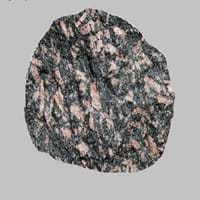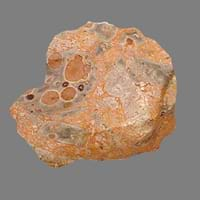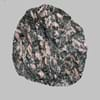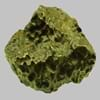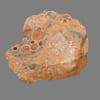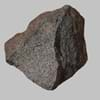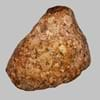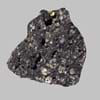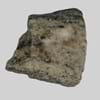Definition
Luxullianite is a rare type of granite, known for presence of clusters of radially arranged acicular tourmaline crystals which are enclosed by phenocrysts of orthoclase and quartz in a matrix of quartz, tourmaline, alkali feldspar, brown mica.
Felsite is a very fine grained volcanic rock that may or may not contain larger crystals and light colored rock that typically requires petrographic examination or chemical analysis for more precise definition
Discoverer
Unknown
Unknown
Etymology
From the village of Luxulyan in Cornwall, England, where this variety of granite is found
From English feldspar and -ite
Class
Igneous Rocks
Igneous Rocks
Sub-Class
Durable Rock, Hard Rock
Durable Rock, Medium Hardness Rock
Other Categories
Coarse Grained Rock, Opaque Rock
Fine Grained Rock, Opaque Rock
Texture
Granular, Phaneritic
Arborescent Patterned, Vitreous
Color
Black, Grey, Orange, Pink, White
Black, Blue, Brown, Green, Orange, Red, Tan, Yellow
Durability
Durable
Durable
Scratch Resistant
Yes
Yes
Appearance
Veined or Pebbled
Layered, Banded, Veined and Shiny
Interior Uses
Bathrooms, Countertops, Decorative Aggregates, Entryways, Floor Tiles, Homes, Hotels, Interior Decoration, Kitchens, Stair Treads
Decorative Aggregates, Flooring, Interior Decoration
Exterior Uses
As Building Stone, As Facing Stone, Paving Stone, Garden Decoration, Office Buildings
Paving Stone, Garden Decoration
Other Architectural Uses
Curbing
Curbing
Construction Industry
As Dimension Stone
Arrowheads, Cutting Tool, Knives, Scrapers, Spear Points
Medical Industry
Not Yet Used
Surgery
Antiquity Uses
Artifacts, Monuments, Sculpture
Artifacts
Commercial Uses
Creating Artwork, Curling, Gemstone, Laboratory bench tops, Tombstones
Mirror, Jewelry
Types
Igneous Protolith Granite, Sedimentary Protolith Granite, Mantle Granite, Anorogenic Granite and Hybrid Granite
Not Available
Features
Available in Lots of Colors and Patterns, It is One of the Oldest, Strongest and Hardest Rock
Available in Lots of Colors and Patterns, Clasts are smooth to touch, Splintery, Very fine grained rock
Archaeological Significance
Monuments
Used
Not Yet Used
Famous Monuments
Data Not Available
Not Applicable
Sculpture
Used
Not Yet Used
Famous Sculptures
Data Not Available
Not Applicable
Pictographs
Not Used
Used
Petroglyphs
Not Used
Used
Figurines
Used
Not Yet Used
Formation
Luxullianite is an intrusive igneous rock which is very hard, crystalline and is visibly homogeneous in texture. It is found in large plutons on the continents, i.e. in areas where the Earth's crust has been deeply eroded.
Felsite is a fine-grained, hard rock which is a type of metasomatite, essentially altered basalt. It forms with or without crystallization, either below the surface as intrusive rocks or on the surface as extrusive rocks.
Mineral Content
Amphibole, Biotite, Feldspar, Hornblade, Micas, Muscovite or Illite, Plagioclase, Pyroxene, Quartz
Feldspar, Iron Oxides
Compound Content
Aluminium Oxide, CaO, Iron(III) Oxide, FeO, Potassium Oxide, MgO, MnO, Sodium Oxide, Phosphorus Pentoxide, Silicon Dioxide, Titanium Dioxide
Aluminium Oxide, CaO, Iron(III) Oxide, FeO, Potassium Oxide, MgO, MnO, Sodium Oxide, Phosphorus Pentoxide, Silicon Dioxide, Titanium Dioxide
Types of Metamorphism
Burial Metamorphism, Cataclastic Metamorphism, Contact Metamorphism, Hydrothermal Metamorphism, Impact Metamorphism
Burial Metamorphism, Contact Metamorphism, Impact Metamorphism, Regional Metamorphism
Types of Weathering
Biological Weathering, Chemical Weathering, Mechanical Weathering
Biological Weathering, Chemical Weathering, Mechanical Weathering
Types of Erosion
Chemical Erosion, Water Erosion, Wind Erosion
Chemical Erosion, Glacier Erosion, Water Erosion
Grain Size
Large and Coarse Grained
Fine Grained
Fracture
Not Available
Conchoidal
Porosity
Less Porous
Very Less Porous
Luster
Dull to Grainy with Sporadic parts Pearly and Vitreous
Vitreous
Cleavage
Not Available
Non-Existent
Toughness
Not Available
Not Available
Specific Gravity
2.6-2.7
2.6-2.7
Transparency
Opaque
Translucent
Density
2.6-2.8 g/cm3
2.6 g/cm3
Resistance
Heat Resistant, Wear Resistant
Heat Resistant, Impact Resistant
Deposits in Eastern Continents
Asia
China, India, Iran, Saudi Arabia, Sri Lanka, Taiwan, Thailand, Turkey, Vietnam
Afghanistan, Indonesia, Japan, Russia
Africa
Angola, Egypt, Madagascar, Namibia, Nigeria, South Africa
Kenya
Europe
Austria, Belgium, Finland, France, Germany, Italy, Norway, Sardinia, Spain, Switzerland, The Czech Republic, Venezuela
Greece, Hungary, Iceland, Italy, Turkey
Others
Not Yet Found
Not Yet Found
Deposits in Western Continents
North America
Canada, USA
Canada, Mexico, USA
South America
Not Yet Found
Argentina, Chile, Ecuador, Peru
Deposits in Oceania Continent
Australia
Not Yet Found
New Zealand
All about Luxullianite and Felsite Properties
Know all about Luxullianite and Felsite properties here. All properties of rocks are important as they define the type of rock and its application. Luxullianite and Felsite belong to Igneous Rocks.Texture of Luxullianite is Granular, Phaneritic whereas that of Felsite is Arborescent Patterned, Vitreous. Luxullianite appears Veined or Pebbled and Felsite appears Layered, Banded, Veined and Shiny. The luster of Luxullianite is dull to grainy with sporadic parts pearly and vitreous while that of Felsite is vitreous. Luxullianite is available in black, grey, orange, pink, white colors whereas Felsite is available in black, blue, brown, green, orange, red, tan, yellow colors. The commercial uses of Luxullianite are creating artwork, curling, gemstone, laboratory bench tops, tombstones and that of Felsite are mirror, jewelry.
